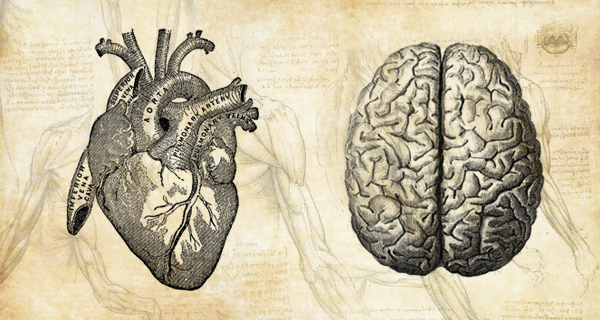Why did a Japanese baby have to raise over $1.8 million to live?
by Henry Watts
Last month, Aoi Yoshida, a 21-month-old girl with dilated cardiomyopathy (a heart muscle disease) exceeded the ¥165 million target (approx. $1,840,000) needed for her to travel to the US and get the transplant that would save her life. No, that’s not a typo. In fact, she finally received roughly $2 million in donations, mainly from charities and philanthropists in Japan. The leftover money will probably not be returned to sender, but will likely be passed on to other children in Japan who, like Aoi, must rely on foreign organs for even a slim chance at life.
With the 2010 abolition of laws that disqualified children under 15 from becoming organ donors, there is admittedly more hope for Japanese children now than there was previously. But in the two years since the change in law, only two children in Japan have received organ transplants at home. In reality, organ transplants remain limited to those Japanese families who can afford to cut in line overseas, or those who can arouse enough public sympathy to win massive donations.
Japan’s 2012 figure of 303 organ transplants is an improvement, but is tiny in comparison to other developed countries. In the UK, for example, there were 3,960 transplants during 2011-12. In Japan, only 115,377 people are registered as organ donors, compared to over 18.5 million in the UK.
It’s not for lack of demand – there are estimated to be over 13,700 people currently on the transplant waiting list here in Japan. Of course, most countries struggle with their own lack of supply for organ transplants, but the scale of Japan’s deficit and the relative lack of awareness on the issue is something very peculiar to Japan.
At the core of the skepticism felt in Japan towards the practice is a discomfort with the diagnosis of ‘brain death’ (death due to the irreversible loss of brain stem function) or death even though the body is kept warm and the heart is sustained by mechanical support. This diagnosis is critical for organ transplants because most organs, including the heart and liver, start to deteriorate after the heart stops beating, reducing the chances of an organ surviving a transplant.
Biomedical ethicists in Japan, Atsushi Asai et al, have written of how culturally unacceptable the brain death diagnosis is for Japan. They cite Shinto conceptions of life and death and the animistic belief that gods reside in all things. For many Japanese, he claims, the possibility that a soul might be located in an “alive” body (even if artificially alive) is reason enough to deny the diagnosis of a legal death and the subsequent harvesting of that patient’s organs.
In their Arguments Against Promoting Organ Transplants from Brain Dead Donors, Atsushi et al point out that the Shinto tradition of mogari prohibits transplants and subsequent autopsies, even if cardiac death occurs, because “it is necessary to observe the corpse for a period of time to confirm the complete departure of the soul.”
Such ritualizing of death in Japan can been seen at its most rigorous in the 2008 Academy Award-winning Japanese film, Departures, which is about a man who returns to his rural hometown in Yamagata and gets a job dressing up the dead for the so-called “gate to the next stage.”
Some of these rituals, although more prominent in rural areas, are still prevalent in Japan. But as comes with the all-inclusive nature of Shinto and Buddhism, there is no telling whether the Japanese follow these rituals merely out of deference to tradition, or because they really wish to make offerings to gods seemingly more preoccupied by the purity of souls than the plight of the living.
Of course, discussions on the soul are a murky business at the best of times. Beliefs in animism, such that can be found in Japan, claim the existence of souls in animals and even inanimate objects – posing problems for dieticians and mechanics alike.
Religious speculations aside, the brain death criteria can still be hard to take for many. Any grieving family would naturally resist being told to give up on a loved one that looked alive. They would see the beating heart and not the machine pumping it. Of course, this is true anywhere and does not, on its own at least, offer an explanation for Japan’s particular resistance to brain death criteria.
The public backlash against the first (and most notorious) heart transplant in Japan in 1968 might explain something though. After Dr. Juro Wada diagnosed a patient as brain dead, he ended up in a murder trial, accused of cutting short medical care in order to harvest organs. The case was eventually dismissed on the basis of the opinions of medical experts and due to inadequate medical records, but what followed was a 30-year moratorium on cadaveric organ transplants and a clear expression of distaste at the whole procedure.
Since permitting the brain death diagnosis and extending it to children (in 1997 and 2010 respectively), it seems Japan is moving in the right direction, albeit at a typically glacial pace. Cases such as Aoi Yoshida’s must surely do more than open up Japanese wallets. There are thousands of people worldwide on the waiting list for organ transplants, and it is becoming increasingly urgent that people everywhere make a decision regarding the future of their organs after they have passed. Whatever your belief system may be, know that this is a real and invaluable chance to save a human life.
More information in English see the Japan Organ Transplant Network: www.jotnw.or.jp
Henry Watts is a British writer on world politics and Japanese society. You can read more of his work on his blog – letterstoyoungbarbarians.









